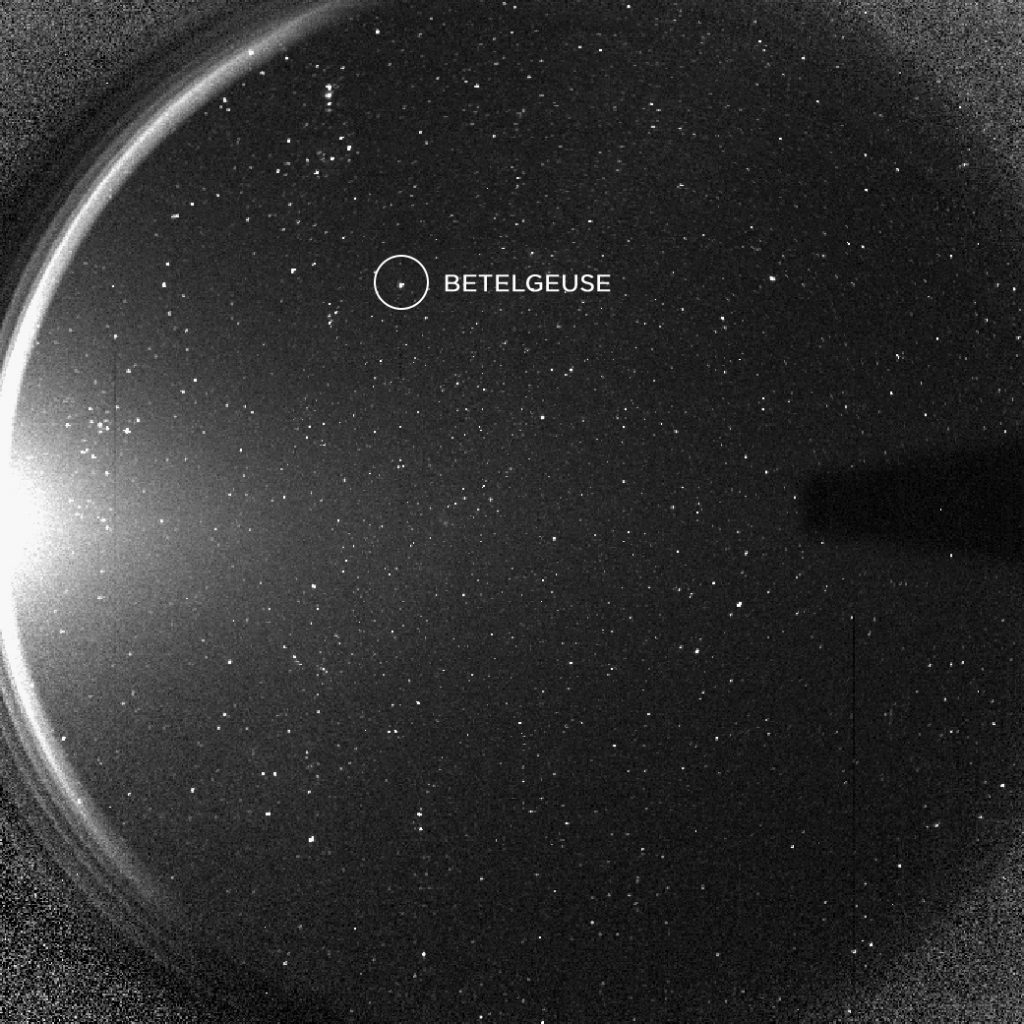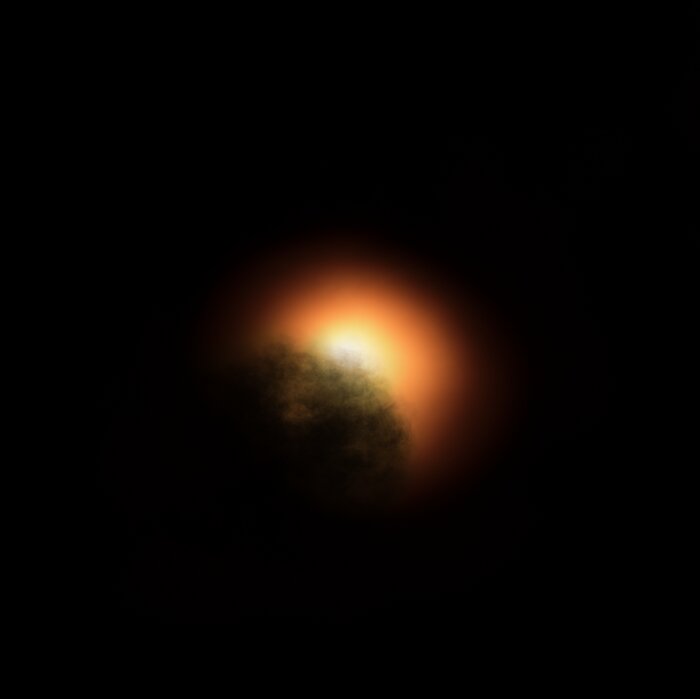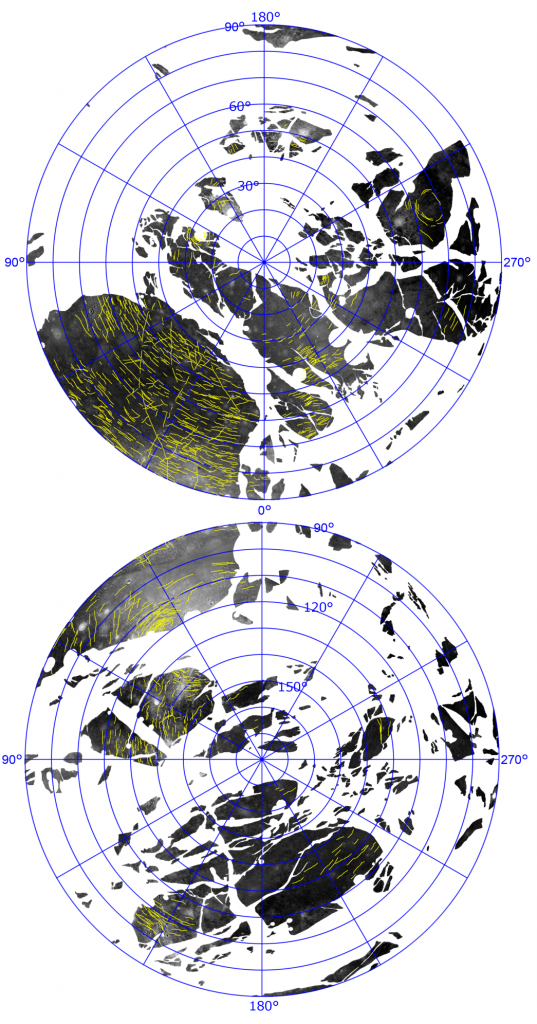Media
Transcript
Folks, I’m here to share some good news: Betelgeuse is misbehaving again.
Last winter, this normally very bright red giant star took us all on an emotional roller coaster ride as it plunged in brightness, appearing fainter than it had ever appeared before. While it’s highly unlikely this star will go supernova for at least 100,000 years, many of us nevertheless hoped something exciting might come of this event and followed its behavior closely. While it did not explode, and in fact re-brightened on schedule, it still started our year with one heck of a good mystery.

Betelgeuse is a variable star with a 420-430 day period, and changes in brightness are part of its everyday behavior. That it got dim wasn’t a big deal. It was how dim it got that had everyone scratching their heads and taking data. From Thanksgiving through New Year’s, Orion’s shoulder faded away until one day, following the expected calendar of behavior, it brightened again. It was expected that this brightening would continue for some 200 odd days, with Betelgeuse returning to its peak brightness in July or August.
Betelgeuse had other plans, however.
This summer, a team of scientists took advantage of STEREO-A’s position 70 degrees around the Sun from Earth. In late June and early July, this solar observer was essentially where the Earth was back in April, and from that position had an unobscured view of Betelgeuse. On three different occasions, mission managers pivoted the telescope to observe a field containing Betelgeuse and numerous other standard stars that could be used to accurately determine Betelgeuse’s brightness.
Which was getting fainter instead of brighter?
According to an Astronomer’s Telegram filed by Andrea Dupree, Edward Guinan, and William T Thompson: Surprisingly, instead of continuing to increase or level off in brightness, Betelgeuse has decreased by ~0.5 mag from mid-May to mid-July. Spanning the STEREO observations, the star dimmed at a rate of 5 mmag/day. The decrease in brightness over 26 days between our first and third observation is comparable to the photometric behavior in late October 2018, and slower than the faster decline, between October 22 and November 10 2019, that marked the beginning of the historic Great Fainting event in February 2020. The next ‘minimum’ according to the 420-430 d periodicity is predicted to occur in early April 2021.
As we enter the dog days of summer during August, Betelgeuse and the dog star Sirius have begun to return to our skies. Currently, Betelgeuse is rising at about 2:45 am local time and gets high enough to allow a reasonable measurement prior to the beginning of twilight. While I personally try to be in bed at that hour, there are many good souls at the American Association of Variable Star Observers (AAVSO) who are going out and taking measurements, and a lightcurve generated from the AAVSO database yesterday shows that Betelgeuse continues its unexpected descent in brightness.
Currently, all the data from STEREO and the AAVSO database are showing the brightness of Betelgeuse only in the green part of its spectra – its “V-magnitude” to use the technical term. To really know what’s going on we need more information. Specifically, we want to know if the star is changing color – which would mean it’s changing temperature – and we want to know from spectral lines if it is expanding or contracting. During the great dimming event of winter 2019-2020, this kind of data allowed us to see that Betelgeuse dipped below expected brightness in all colors and that this occurred while it was expanding outward.
It is somewhat lucky that we have all the right data to understand what happened to Betelgeuse last winter. This star was part of an ongoing campaign by the Hubble Space Telescope that was systematically observing the star in sufficient detail to see changes in brightness on different parts of its surface.

In January 2019, a year before its faintest brightness, Hubble began observing Betelgeuse in the ultraviolet. From September through November 2019, Hubble observed hot material rising through Betelgeuse’s atmosphere. According to Andrea Dupree: With Hubble, we [saw] the material as it left the star’s visible surface and moved out through the atmosphere, before the dust formed that caused the star to appear to dim. We could see the effect of a dense, hot region in the southeast part of the star moving outward. This material was two to four times more luminous than the star’s normal brightness. And then, about a month later, the southern hemisphere of Betelgeuse dimmed conspicuously as the star grew fainter. We think it is possible that a dark cloud resulted from the outflow that Hubble detected. Only Hubble gives us this evidence of what led up to the dimming.
This is consistent with the research Emily Levesque discussed during an interview with us back in April. Essentially, this material, as it cooled, became large dust grains, and those dust grains scattered light of all colors, effectively making the star look dimmer.
The Hubble data adds additional details, which are now published in The Astrophysical Journal, with Dupree as the first author. These results are accompanied by data from the STELLA telescope in Tenerife, which measured the velocity of Betelgeuse’s outer layers during the dimming and mapped the rising of a convective cell coincident with the pulsation curve swelling the star.
It is rare to see so much attention thrown at a single star, but this is a star that might someday go supernova while civilization still exists on Earth. Maybe. Let’s see how 2020 goes. If we can make it to January, maybe we can make it another 100,000 years.
Anyway, lots of scientists want to understand Betelgeuse as well as we can, and the current Hubble observing campaign is slated to continue through 2021. I, for one, hope the data they obtain allows us to understand the renewed dimming and that maybe we will get something particularly exciting to observe this coming season.
For now, we understand last year’s fading, and we have a new fading to confuse us.
Let’s face it, most scientists don’t like being confused, and this is part of why we become scientists – so we can un-confuse things.
From astronomers trying to sort out why stars misbehave to planetary scientists struggling to understand how objects of the same mass and composition can have different geology, we aren’t very good at letting mysteries stay mysteries.

We round out today with a new paper in Icarus with lead author Naoyuki Hirata of Kobe University. Researchers reanalyzed image data from the Voyager 1, Voyager 2, and Galileo spacecraft on Jupiter’s largest moon, Ganymede, and specifically looked at formations called furrows, which are troughs found only on the Dark Terrain of the moon. This Dark Terrain is older than the Bright Terrain – yes, those are their names – and thus shows more evidence of cratering as well as all these furrows.
The team found that the furrows are laid out in concentric circles around a single point on the surface, suggesting that one single impact is responsible for an extremely large multiring crater that covers almost the entire surface of Ganymede. The crater has a radius of 7800 kilometers, which is four times longer than the next largest crater in our solar system. That crater, found on Jupiter’s moon Callisto, has a radius of a mere 1900 kilometers.
Callisto is nearly the same size as Ganymede; however, it does not have the same internal structure. Callisto does not have differentiated layers, while it is thought that Ganymede has layers of rock, iron, and ice. According to a Kobe University article: An enormous amount of heat is necessary to form these differentiated layers. It is possible that the aforementioned large scale impact could have been the source of this heat.
Simulations were done to estimate the size of the impact event needed to cause the multiring crater, and computational results from the PC Cluster at the National Astronomical Observatory of Japan (NAOJ) indicated that the impacting asteroid was approximately 150 kilometers in radius and traveling at a speed of 20 km/s. This impact likely occurred four billion years ago, during the period referred to as the Late Heavy Bombardment, and gives us further insight into the formation and evolution of our solar system.
And with two more mysteries better explained, that rounds out the news for today.
Learn More
NASA Satellite’s Lone View of Betelgeuse Reveals More Strange Behavior
Mysterious Dimming of Betelgeuse: Dust Clearing Up
- Leibniz Institute for Astrophysics Potsdam (AIP) press release
- Center for Astrophysics | Harvard & Smithsonian press release
- NASA Hubblesite press release
- ESA Hubble Space Telescope press release
- “Spatially Resolved Ultraviolet Spectroscopy of the Great Dimming of Betelgeuse,” Andrea K. Dupree et al., 2020 Aug. 13, Astrophysical Journal (Preprint on arxiv.org)
That Must’ve Hurt — Ganymede Covered by Giant Crater
- Center for Computational Astrophysics press release
- NAOJ press release
- Kobe University article
- “A Global System of Furrows on Ganymede Indicative of Their Creation in a Single Impact Event,” Naoyuki Hirata, Ryo Suetsugu & Keiji Ohtsukia, 2020 July 15, Icarus
Credits
Written by Beth Johnson and Pamela Gay
Hosted by Pamela Gay
Audio and Video Editing by Ally Pelphrey
Content Editing by Beth Johnson
Intro and Outro music by Kevin MacLeod, https://incompetech.com/music/


 We record most shows live, on Twitch. Follow us today to get alerts when we go live.
We record most shows live, on Twitch. Follow us today to get alerts when we go live.